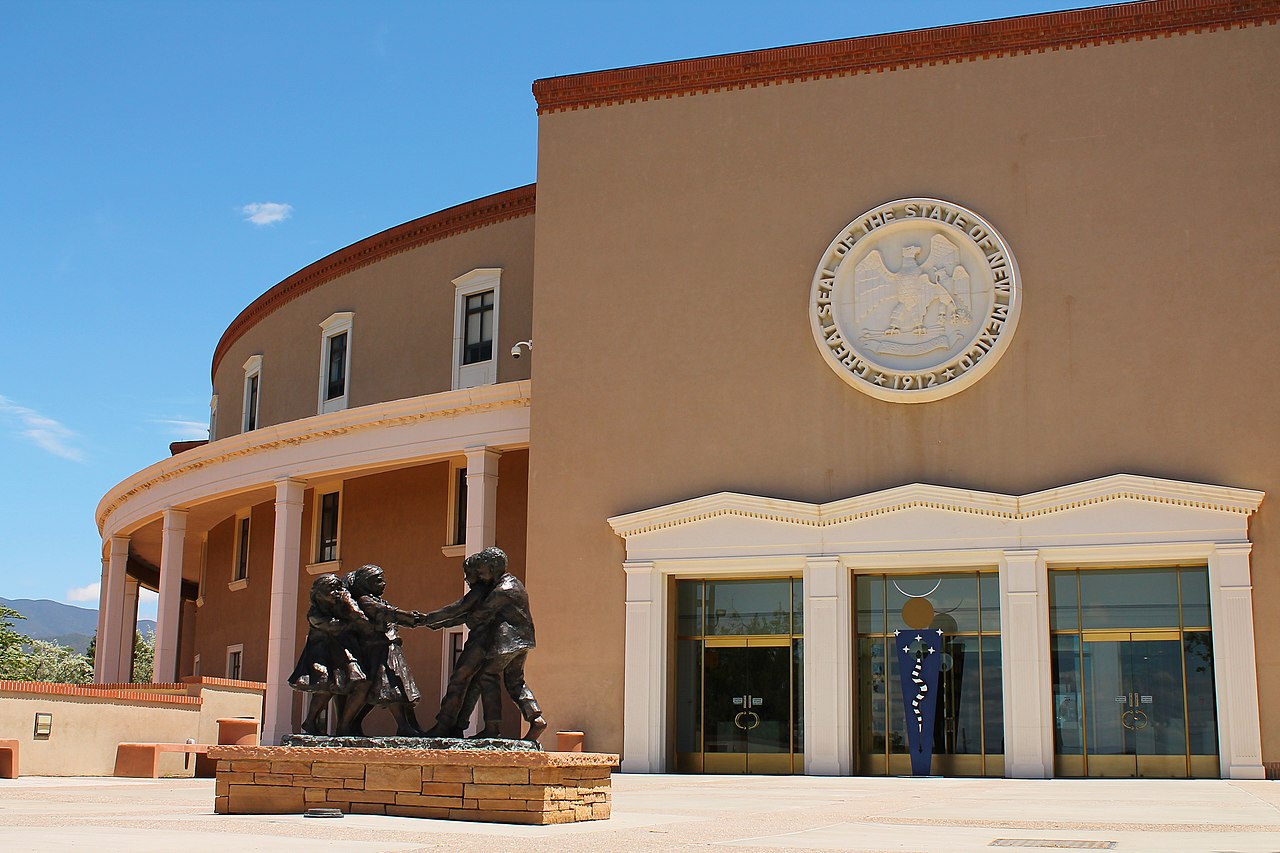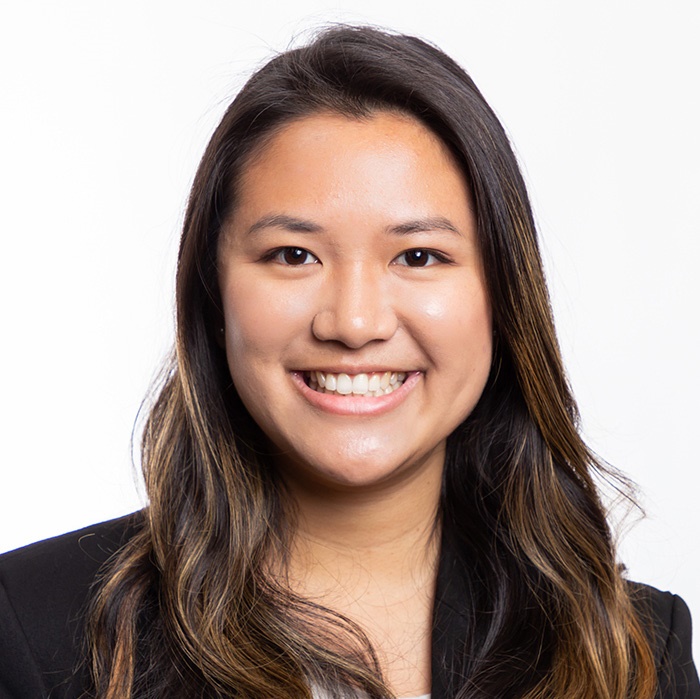New Mexico’s 2020 Primary in the Wake of the Coronavirus
What challenges does New Mexico face ahead of the general elections?

Published by The Lawfare Institute
in Cooperation With

Lawfare is partnering with the Stanford-MIT Healthy Elections Project to produce a series on election integrity in the midst of the coronavirus crisis. The Healthy Elections Project aims to assist election officials and the public as the nation confronts the challenges that the coronavirus pandemic poses for election administration. Through student-driven research, tool development, and direct services to jurisdictions, the project focuses on confronting the logistical challenges faced by states as they make rapid transitions to mail balloting and the creation of safe polling places. Read other installments in the series here.
New Mexico’s June 2 primary had one of the highest voter turnouts in the state’s history despite falling in the midst of the coronavirus pandemic. Yet the election was not without its challenges: Election officials and voters had to adjust to delays and an influx of absentee ballots, both of which may factor into the November election.
Turnout in this year’s primary soared to about 40 percent of eligible voters, the highest participation seen in New Mexico since the early 1990s. This increase can be attributed to a huge influx of absentee ballots, which accounted for almost 60 percent of all votes in the state. But the record quantity of election-related mail resulted in significant ballot-counting delays. In-person voter turnout, by contrast, was relatively light, as most voters chose to vote absentee. The primary also revealed unique challenges for Native American and senior voters, who have greater risk of contracting COVID-19, the respiratory disease caused by the novel coronavirus.
In an attempt to ameliorate some of these problems before November, Governor Michelle Lujan Grisham signed Senate Bill 4, which allows for flexibility as election officials face the upcoming general election. Legislators, however, removed provisions that allowed county clerks to automatically send mail-in ballots to registered voters. On Aug. 18, New Mexico joined 13 other states as plaintiffs in a lawsuit against President Trump and Postmaster General Louis DeJoy. This suit alleges that changes to the United States Postal Service (USPS), prompted by Trump and implemented by DeJoy, undermine the postal service’s ability to do its job and will disenfranchise voters in violation of the Constitution.
Our full report on the New Mexico primary can be found here.
New Mexico’s Response to the Coronavirus
After the New Mexico Supreme Court’s mid-April decision to maintain in-person voting for the upcoming June 2 primary, the New Mexico Department of Health (NMDOH) issued an order providing guidance for implementing social distancing measures at polling places. The order emphasized that absentee voting remained the safest way to vote in the primary and encouraged voters to apply for absentee ballots.
As New Mexico was trying to coordinate a safe and successful primary election, state officials were also struggling to contain the virus’s spread. NMDOH extended the state’s stay-at-home order several times throughout the month of April, and on May 1, the governor implemented a phase 2 partial reopening, which was later paused near the end of June. Under the July 31 All Together New Mexico plan, certain businesses could reopen if they implemented and adhered to the COVID Safe Practices issued by the state, including a face mask requirement.
New Mexico received more than $4.6 million as a part of the Coronavirus Aid, Relief, and Economic Security (CARES) Act. State officials used the funds to prepare for and safely conduct the 2020 presidential primary and to promote absentee voting in the interest of voter and poll worker safety. Masks for individual voters, sanitizing supplies for polling places and personal protective equipment for poll workers were purchased for each voting location.
By the time the June 2 primary election took place, New Mexico had recorded 8,024 coronavirus cases and 367 deaths.
Preparations for the Primary
New Mexico held its primary election on June 2 this year. In New Mexico, presidential primaries are held concurrently with the primary election for other federal, state and local offices. Despite state officials’ efforts to ensure a successful primary, the stay-at-home order, public health emergency and back-and-forth court rulings about mail voting complicated the election process considerably.
Under New Mexico state law, county clerks are prohibited from mailing ballots to any person other than the applicant for the ballot and can send ballots only upon request. In response to COVID-19 health concerns about in-person voting, there was pressure for the state Supreme Court to allow for an all-mail primary election. The Supreme Court rejected the request but ordered the county clerks or the New Mexico secretary of state to mail applications for absentee ballots to all registered voters. After the state’s governor declared a public health emergency in March, the secretary of state opened the online absentee ballot portal one month early and created a website for voters to track their ballots.
Overall, 250,000 absentee ballots were cast by mail in New Mexico’s primary, which was a significant increase from about 23,000 mail-in ballots cast in 2016. In addition, election turnout was up by more than 50,000 voters compared to the state’s 2016 primary.
Although New Mexico’s stay-at-home order encouraged voters to vote by absentee ballot, most polling locations nonetheless remained open during the June 2 primary. The stay-at-home order likely contributed to the reduced number of in-person voters at these stations.
According to New Mexico secretary of state, there were 21 fewer early voting locations and 167 fewer polling sites open on election day for the June 2 primary than in 2016.
Most county websites provided information on residence-specific early voting and Election Day polling locations, while other counties, such as Catron County, allowed voters to vote at any precinct location regardless of residence. Provisional ballots were available if poll workers could not locate a voter’s information, if a voter’s name did not appear on the roster of the polling place or if a first-time voter had registered by mail.
And while most county websites did not include any information regarding social distancing measures, a statewide public health order clarifying polling location procedures was released on April 30. The order imposed certain social distancing restrictions on polling locations that limited polling places to four voters at a time (two in mobile voting units) or 20 percent maximum capacity. The order also required regular sanitation of shared surfaces and machines, strict social distancing, and face masks for all voters (masks were given to voters who did not bring their own).
New Mexico counties adopted similar procedures to comply with the state’s directions for in-person voting, but the information they gave voters was often incomplete. In our full memo appendix, we found that only about 35 percent of the counties provided information on in-person voting locations on their clerk’s website. Even then, the information was often inconsistent with that of the state. Several county websites (for example, Colfax County, De Baca County, Mora County, Quay County and Union County) did not have any readily accessible information on in-person or absentee voting procedures. And only two county websites mentioned that provisional in-person voting was available for those who applied but did not receive their absentee ballot on time. Further, most counties in New Mexico did not mention coronavirus-related procedures for voting in person.
As for mail voting, the secretary of state’s office mailed absentee ballot request forms to all registered voters who were registered with a major political party. But only a handful of counties noted this on their websites, and only half of New Mexico’s counties had information on how to request an absentee ballot.
Some counties developed innovative ways to disseminate information, however. Santa Fe County had a user-friendly video on the different ways to obtain and use an absentee ballot. Rio Arriba County also provided educational tools and information on how to vote. And Socorro County provided an educational guide on voting that targeted the younger population in the county.
Counties gave voters a wide variety of options to request and return absentee ballots. Some counties gave voters the option to request absentee ballots over the internet, by phone, in person, or through email and to return ballots by mail, email, hand delivery, or, in some counties, by fax to the county clerk. All absentee ballots sent by the secretary of state had prepaid postage for mail return.
Challenges in Native American Communities
In mid-May, 60 percent of all positive coronavirus cases in New Mexico were among tribal communities. The Navajo Nation represented 45 percent of all cases in the state, even though Native Americans from all tribal communities constitute only 11 percent of the state population. Fifty percent of all COVID-19-related deaths in the state were in Native American communities.
To contain the coronavirus outbreaks, pueblo and tribal governments, including multiple pueblos, Apache tribes, and the Navajo Nation, closed their borders to keep nontribal members off the reservations. Roadblocks disrupted mail service in some instances. Because the law states that any registered voter can vote at polling sites on reservations, the majority of these polling locations were closed to curb the spread of the coronavirus. Fewer polling stations on reservations also reduced the number of translators available to assist Native Americans who are not comfortable reading English or Spanish.
Voting by mail also places unique burdens on Native American communities. For one, because tribal members frequently live in rural areas without access to broadband, which provides internet access, registering to vote can be an arduous process. In addition, reservation residents who do not have street addresses sometimes must drive significant distances to reach a post office and therefore cannot frequently check their mail. As a result, even though there was a record increase in voter turnout statewide, turnout among Native American voters decreased by 2 percent in the 2020 primary.
Primary Results
The record-high turnout in the 2020 primary occurred despite concerns imposed by the ongoing pandemic. New Mexico saw a 42 percent voter turnout in this year’s primary election, six points higher than in 2016 and 15 points higher than in 2012.
While New Mexico has permitted no-excuse absentee voting for years, demand for absentee ballots surged for the 2020 primary. More than 250,000 absentee ballots were cast statewide in the June primary, a huge increase compared to 2008’s record of 30,854 absentee ballots cast. Absentee turnout was 10 times higher than in the last presidential primary.
Despite state efforts to ensure voters had sufficient time to participate in the primary, voters still reported significant delays in receiving their ballots. State officials launched the state’s absentee ballot application website early and set up an ad campaign to encourage early absentee voting in order to prevent complications with mail-in ballots. Nonetheless, the regional USPS experienced an unprecedented surge in election-related mail, and some voters’ ballots arrived more than a month late. Voters who called their county clerk’s office reported that they reached full voicemail boxes. Some 33 residents at a senior living facility in Santa Fe waited two months for their ballots, while others faced computer errors incorrectly stating they were not registered. Given the widespread concerns about mail delays leading up to the June primary, New Mexico allowed voters—or immediate family members or caregivers of the voter—to deliver their absentee ballots in person to any early voting location, to the county clerk’s office, or to a polling station on Election Day.
Due to the unprecedented numbers of absentee ballots to be counted, counties including Taos, Bernalillo, Doña Ana, McKinley, Santa Fe and Valencia had delayed election results. Both Taos and Santa Fe counties petitioned a district court to extend the initial 24-hour deadline for vote tabulations; both petitions were granted. Statewide, at least 1,300 absentee ballots arrived too late to be counted, as New Mexico law prohibits county clerks from tabulating any ballots that arrive after election night.
Fewer New Mexico residents voted in person for this primary than in previous years. Overall, in-person voter turnout was “very light” thanks to the absentee ballot campaign—there were no reports of long lines on the primary Election Day. But policy designed to protect voters amid the pandemic may have come with unintended consequences. The closure of some early voting sites and regular polling stations on tribal lands risked reducing Native American communities’ access to the ballot. With 21 fewer early voting locations and 167 fewer polling stations on the June Election Day, Native American voters and older citizens who do not drive were particularly disadvantaged in the democratic process.
Ongoing Challenges
On June 20, Governor Lujan Grisham signed new election legislation into law, providing election officials with the flexibility to protect voting in the 2020 general election during the coronavirus pandemic. The law has several potential benefits for the upcoming general election:
- The law authorizes the secretary of health to issue health-related orders regarding the conduct of the 2020 general election, so long as the recommendations are consistent with the U.S. Centers for Disease Control and Prevention or are evidence based.
- Because the recommendations in public health orders could vary by county depending on the severity of the outbreak, the law also empowers county clerks to enact special election rules for their counties to address public health.
- Flexibility in the law could allow proposed procedures such as drive-through polling sites, expanded early-voting hours, or direct mailing of absentee ballots without a request.
- Additionally, the law ensures that at least one polling location within tribal lands remains open if voters cannot leave their reservations to vote.
- The legislation also addressed vote-counting delays by removing a deadline for county clerks to announce election results, thus eliminating the need to file emergency petitions.
These measures have the potential to cure many of the election challenges exposed by the June 2 primary. Still, in the run-up to November, obstacles for New Mexico remain, including the state’s ongoing litigation against President Trump and Postmaster General DeJoy. As it prepares for the 2020 general election, New Mexico must also grapple with communication challenges at the state and local levels, absentee ballot mailing and processing issues, and the disproportionate and devastating impact that COVID-19 has had on Native American communities within the state’s borders.








